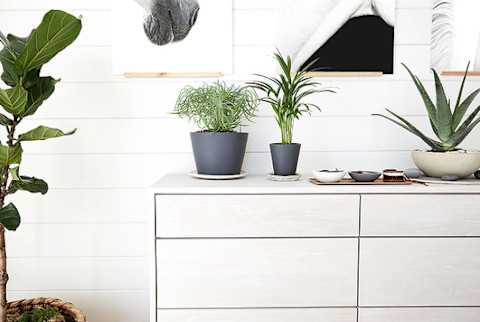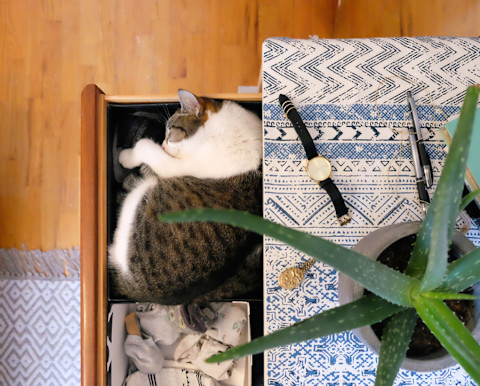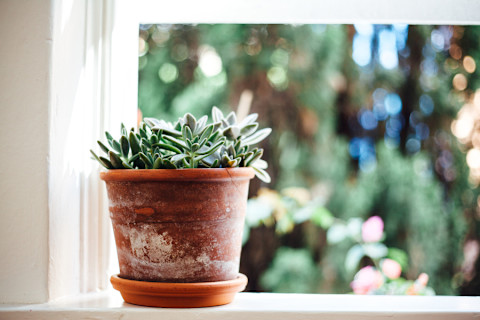
During my workday, I sit inside at a computer to write, research, and connect with people. But I always need those daily breaks to walk outside, breathe the fresh air, feel the sunlight on my skin, and appreciate life. Sound like you, too?
This attraction to the outdoors has a name: biophilia. Psychologist Erich Fromm coined the term in the 1950s to explain our inherent need to connect to the living world. He qualified biophilia as a part of our inner nature and a requirement for proper development. In other words, a connection to nature contributes not only to greater physical well-being but mental, emotional, and spiritual health, too.
That's why the fact that we're becoming an increasingly indoor culture1 is so concerning. Our lack of exposure to nature is a huge problem—one that we're just starting to fully comprehend and grapple with.

Journalist Richard Louv, author of several books on this "nature deficit disorder," is a leading contributor in a growing nature connection movement that takes shape in the form of ecotherapy (nature-based methods for mental and spiritual healing), forest bathing (gaining strength from trees, leaves, and ground), and biophilic design (architecture that immerses people in nature).
Biophilic design in particular is really gaining traction today. Its design principles prioritize orientation to natural light, views, natural materials, symbols of nature, and much more. Up until now, most biophilic projects have been in the health care and hospitality industries as well as corporate headquarters like those of Google and Apple.
The feng shui connection
Our homes are such a crucial part of our lives, and for many of the millions of virtual employees and solo entrepreneurs, they double as workplaces, too. So why aren't we all working to infuse them with more feel-good nature?
What is life without beauty and playfulness? Nature is full of both.
When I first learned about biophilic design, I realized how similar it was to the core feng shui principles, which also take cues from observing nature: to observe the chi (subtle life force energy) of the land, to build in accordance with and respect to the features and resources of the land, to integrate nature into our spaces through the balance of yin and yang, and to harness the five elements (wood, fire, earth, metal, and water).
How to craft a nature-inspired sanctuary
Although biophilic design uses different terminology, these two disciplines are more alike than different. Here are five steps to help you create a home that is inspired by nature:

1. Showcase natural materials.
Who doesn't love natural materials? They activate all of our senses with shape, color, scent, and texture. Think about working at a wood table versus a Formica one—no comparison! Beach glass, shells, stones, and driftwood all make for lovely accessories, while live plants and essential oils can enliven any space.
Windows views are a powerful metaphor for our lives. Is your view looking out on tree-topped mountains—or a brick wall? Consider the space where you spend a lot of time during daylight hours and how your view might be affecting it. Don't fret if you're not surrounded by beauty; you can remedy a poor view by blocking it with a frosted window film and placing some gorgeous nature artwork and live plants around it instead.
2. Place objects mindfully.
We should all take a cue from the inherent order of nature when decorating our homes. We need to be mindful of where we place furnishings so we don't impede the flow of energy through a room. Place the primary pieces of furniture (bed, desk, and main seating) so that they face the rest of the room. In feng shui, we call this "command position." It is the most comfortable position to be in, and it allows you to fully rest and be most productive.
3. Bring on the yang energy.
Incorporate the energetic yang feng shui energy into your space by maximizing its natural light and opening windows whenever possible. Some live healthy plants and, of course, a cat or dog or two can add to the liveliness of any space as well.

4. Make room for beauty and play.
What is life without beauty and playfulness? Nature is full of both, from delicate flowers to mysterious paths that wind into a forest. Find pieces that elicit curiosity, wonder, and appreciation. Be bold and curious. We should feel love and laughter every day.
5. Find your middle ground.
Creating a balance between the extremes of yin and yang (complementary opposites such as dark/light, soft/hard) is often subtle but very powerful. I call this "the Middle Way," as in Buddhism, for instance, not too still, not too energetic.
Bringing some nature into our homes is not only a great way to ease the strain of everyday life, but it brings us back to more harmony, aligning us with the natural flow of energy in the heavens and earth. I hope you enjoy the fruits of greater connection to nature. Let me know how it turns out.
